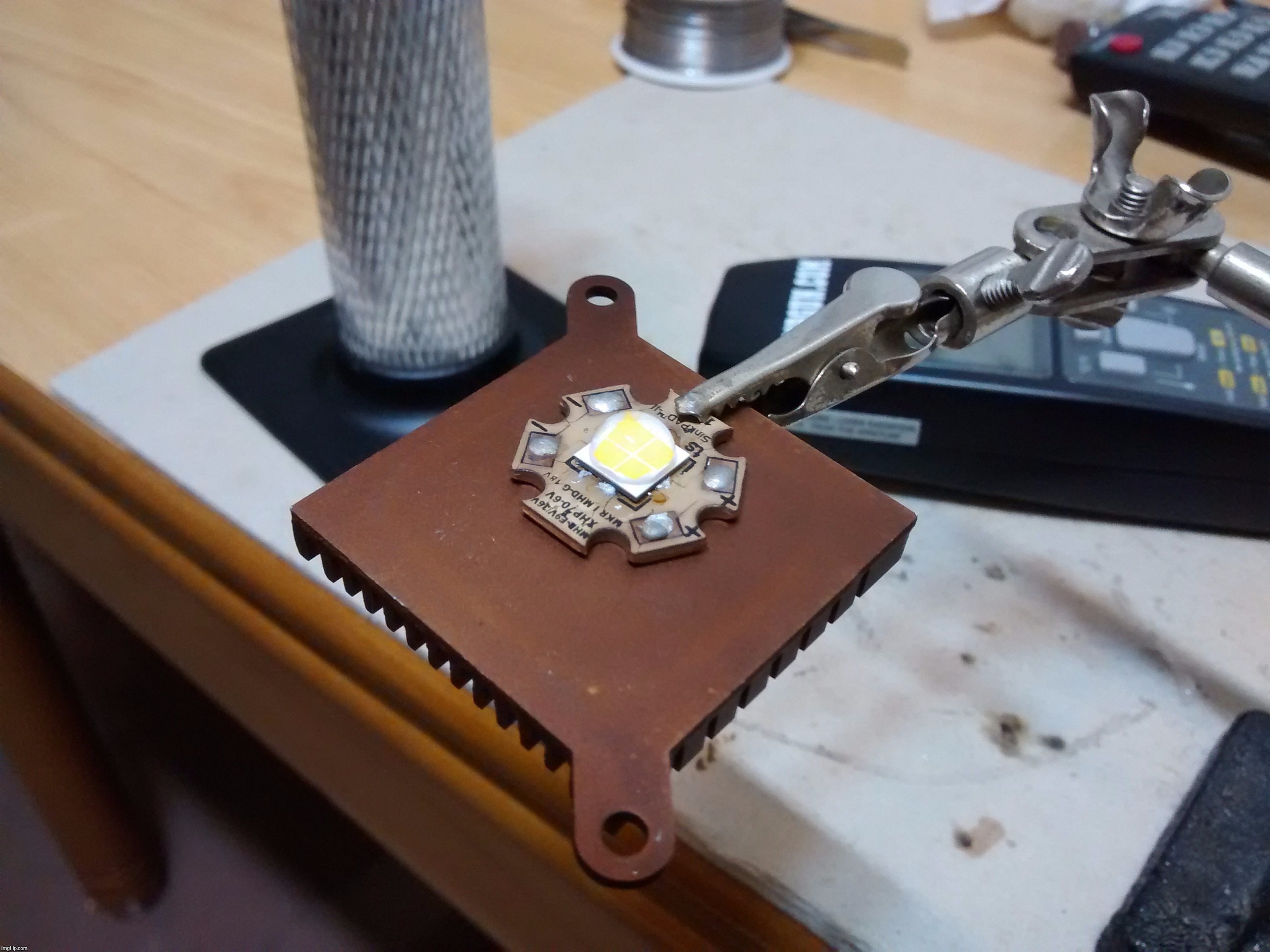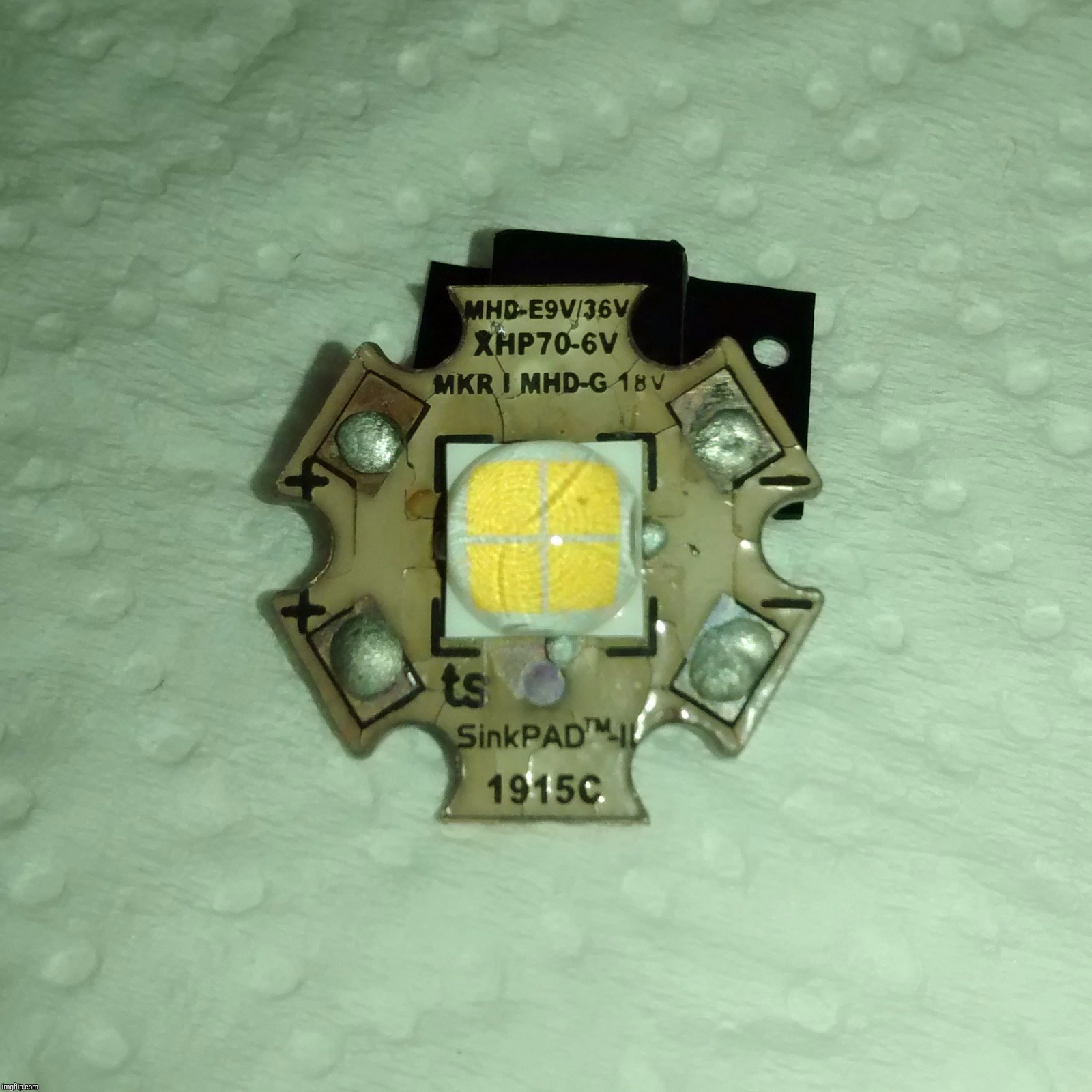check to be sure you have a 120v unit.
a 240v unit may still heat but will be slow and may not ever reach the setpoint.
if it comes down to the trashcan i would take a shot at fixing it.
so put me down for it.
but i bet you have a 240v unit or if switchable its in 240 rather than 120.
As snakebite says it is likely e1000 got a 240V unit. Nearly for sure the only difference between 120/240V or 115/230V units are the heating elements. With half voltage the heating elements only deliver 25% of their maximum power. Either the seller and/or his/her dropshipper put their feet in it. 
Mon, 08/19/2019 - 02:37
Yup agree. There aren’t any other switches or controls other than the front temp control (and set button) and the power switch in the back.
Snakebite, if you really want it, it’s yours, PM me your address.
got it.
and as predicted it needs 240vac.
the crude power supply for the controller tolerates low voltage fine but the elements do not.
it worked fine on 240vac.
Thanks E1000 i owe you one.
Glad you had better luck with it than I did!
My hotplate arrived, in just 18 calendar days, and it Works!
Once I read the right page in the manual (the pics dont match my model), I figured out how to set the temperature. (not the way I tried before reading)

The unit arrived set to 100C initially, and pushing on the up down buttons was the wrong way to try and change it. I learned to press set first, after that… Bob’s Your Uncle!
It took about 16 minutes to get up to reflow temperature. I have not confirmed the calibration, I set the display target to 200 C, and the reflow worked!
several firsts
my first hotplate (Im dubbing it my McBob model)
my first hotplate reflow, sw45k, and
the first time I have used a DMM to test polarity
Man I got Happy, when I saw the LED light up! ![]()
I could not have done it without the Jewelers Visor
and all the help Ive received from members of BLF.

Wooow, that looks amazing for the price. I wonder what would be your feedback after a year but so far so tempting…
Just a question :
Is it better to apply temperature 260C for 3 sec, or 220C for 15 sec?
I have little experience in reflowing (maybe 25 times?) and I found out lower Temps take longer time than expected. I’m wondering if short but higher temp wouldn’t be better. I do it with just a soldering iron but try to follow all the advices found here.
Looks like i'm the only one who use heatgun set to 250 and as soon as emitter starts to move i just quickly position it with tweezers and tap to remove excess of solder and voila.
The whole process under 30 sec.
Maybe i'm doing something wrong...![]()
Believe as you wish and deal with the consequences (be it bad or good).
I particularly like to use my electric stove, and an infrared thermometer to monitor temperature. Slow ramp up with around a couple phases: preheat-soak and “reflow hill”. Since I do it by hand, with standard Sn63Pb37 paste, I like to be gentle and avoid high temperatures. I usually employ at least 2 to 3 minutes in the preheat-soak phase (up to around 140 - 150°C), then I raise the stove's power level to reach and keep “reflow hill” temperatures (190 - 220°C) while monitoring temps with my IR gun over the frying pan. It's actually quite easy for me since my selection of pan size, stove engine and power level leaves it in a comfortable “temperature hill” with enough time lapse for reflowing.
There's really no point in raising temperature higher than it needs to be.
Stove plus pan or hot plate setups certainly make life a lot easier because their large thermal intertia and/or electronic regulation prevent sudden and potentially harmful temperature changes. 
Never saw any comment or picture of damaged emitter due to excessive heat.
What does it look like, does emitter really melt or beam gets ugly?
I used hot air, it worked fine
my lights work, and are not dim
It sounds like youre good at hot air relfows, and getting it done fast…
I suggest you post a video tutorial ![]()
.
Im really enjoying the hands free, constant temperature, solid work surface, of the hotplate
the one I chose only cost $37
I would do it again
I like having Both
HotAir and HotPlate
if the domes are coming off, maybe yes… else, maybe no ![]()
I think for you, a HotPlate would be a solution looking for a problem.
It would take up more real estate, and waste perfectly good beer money.
otoh, its a cute little thing, for small money… have you been a good boy, do you deserve a treat? LOL!
Can you post a link of that plate?
Video of my work, oooof, better not. It’s messy and don’t know how to hold the phone. It’s more like Matt posted in his video, almost like using a lighter LOL
check post 148
check post 119
top of post 165
I am pretty sure very reflow experienced people like clemence would tell you any reflow causes some damage to the emitter, even if very subtle. If you reflow carefully, with tight temperature control, lots of reflows can be done on emitters without noticeable damage (and I mean using integrating spheres and testing setups to carefully measure variations in Vf and very small output losses). If you are harsh, the emitter will definitively feel it:


This is an example of rough reflowing. That emitter later died with little overcurrent. 
Daaaaamn...
Barkuti you just gave me chils...
Lucky i STILL didn’t do something like that and all of my babies are driven hard AF.
But you never know... i think i’ll follow jon_slider’s example.
@Barkuti
That 70 looks more like a fried egg than a led. ![]()
I’m a another user of just plain old hot air, I use distance from the mcpcb to adjust heat as well as the set temperature.
Takes a little practice, but works good for me.
I do have a hotplate, but by the time it comes up to temp I would already be soldering the mcpcb, led back in the light using hot air.
The hotplate is the correct way to do it but I’m to impatient I guess. Doing triples I do prefer the hotplate.
I do have a hot air gun but for reflow purposes I prefer to use my stove. I take my time, a good reflow matters.
I've reflown some really big stuff in my kitchen, 12" × 2" 5730 aluminium bases, with the help of some big & flat cooking dish (using a llanda, a cooking dish usually employed to bake a sponge cake dessert).
By the way, how do these hot plates take so long to reach reflow temp?  15 minutes? C'mon! 5 - 6 minutes is enough, imho.
15 minutes? C'mon! 5 - 6 minutes is enough, imho.
I’ve seen MCPCBs look like that before, but you’ve really got to get them HOT HOT to do that. Mos often I see that when I am trying to remove an old MCPCB from a heat sink and don’t intend to save it. I’ve left mcpcbs in my skillet and forgot about them coming back like 20 minutes later and not had them look that bad. Boards with white mask will turn a bit dingy from being hot too long sometimes.
Seems that there’s no clean soldering paste with or without lead. Does it make much of a difference considering the small amount? Also, is there much of a need for flux here, or only with cleaning off an MCPCB after removing an emitter?
When using a heat gun, I assume you’ve got an alligator clip holding the MCPCB and you’re blasting it from below. Do you start at a low temp for a min or so, then gradually increase heat until reflow occurs?